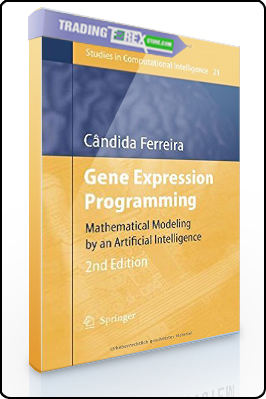Candida Ferreira – Gene Expression Programming (2nd Ed.)
$9.00
Size 3 MB
You Just Pay: $9
- Description
Description
This book describes the basic ideas of gene expression programming (GEP) and numerous modifications to this powerful new algorithm. It provides all the implementation details of GEP so that anyone with elementary programming skills will be able to implement it themselves. The book includes a self-contained introduction to this new exciting field of computational intelligence. This second edition has been revised and extended with five new chapters.
From the Back Cover
Cândida Ferreira thoroughly describes the basic ideas of gene expression programming (GEP) and numerous modifications to this powerful new algorithm. This monograph provides all the implementation details of GEP so that anyone with elementary programming skills will be able to implement it themselves. The book also includes a self-contained introduction to this new exciting field of computational intelligence, including several new algorithms for decision tree induction, data mining, classifier systems, function finding, polynomial induction, times series prediction, evolution of linking functions, automatically defined functions, parameter optimization, logic synthesis, combinatorial optimization, and complete neural network induction. The book also discusses some important and controversial evolutionary topics that might be refreshing to both evolutionary computer scientists and biologists.
This second edition has been substantially revised and extended with five new chapters, including a new chapter describing two new algorithms for inducing decision trees with nominal and numeric/mixed attributes.
Cândida Ferreira thoroughly describes the basic ideas of gene
expression programming (GEP) and numerous modifications to this
powerful new algorithm. This monograph provides all the implementation
details of GEP so that anyone with elementary programming
skills will be able to implement it themselves. The book also includes a
self-contained introduction to this new exciting field of computational
intelligence, including several new algorithms for decision tree
induction, data mining, classifier systems, function finding, polynomial
induction, times series prediction, evolution of linking functions,
automatically defined functions, parameter optimization, logic
synthesis, combinatorial optimization, and complete neural network
induction. The book also discusses some important and controversial
evolutionary topics that might be refreshing to both evolutionary
computer scientists and biologists. This second edition has been
substantially revised and extended with five new chapters, including
a new chapter describing two new algorithms for inducing decision
trees with nominal and numeric/mixed attributes.















